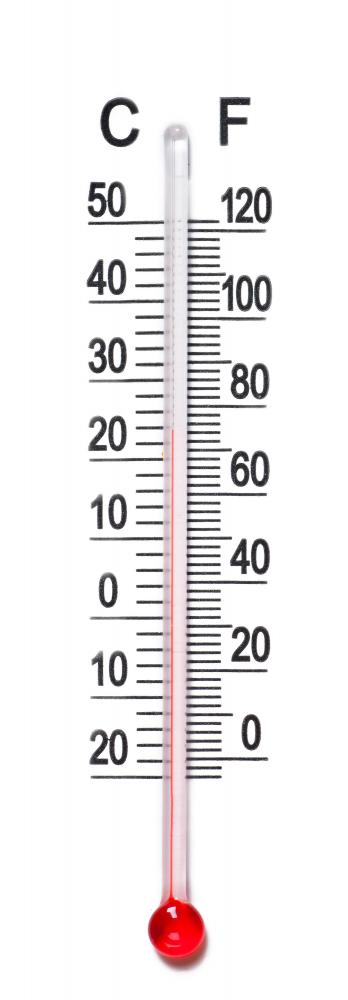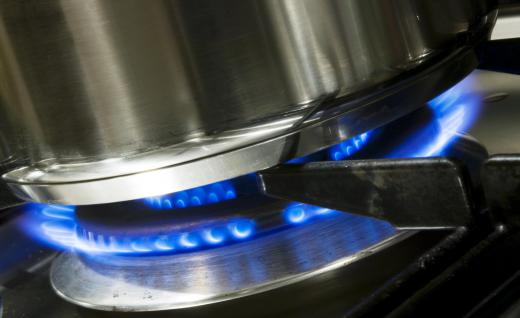How is Temperature Measured?
 Mary Elizabeth
Mary Elizabeth
Temperature is the heat of an object, measured by its intensity or degree on a defined scale. There are several scales used to measure temperature, and the most common in use today are Celsius, Fahrenheit, and Kelvin. Note that style guides differ on the use of an upper- or lowercase k for Kelvin. Other temperature scales, which are either little used or obsolete, include Delisle, Newton, Rankine, Réaumur, and Rømer. We’ll review the temperature scales in chronological order, though the Celsius scale underwent changes several hundred years after its initial invention, we’ll save it for last.
English scientist Sir Isaac Newton invented the Newton Scale in about 1700. Newton’s temperature scale fixed the degrees by defining the two points of melting snow and boiling water as 0 and 33 respectively. Danish astronomer Ole Christensen Rømer suggested the Rømer temperature scale in 1701, using the set points of the freezing point of brine at 0 and the boiling point of water at 60.

A physicist named Fahrenheit invented the scale currently used for non-scientific temperature measurement in the United States, but pretty much every other detail is in dispute. Various sources refer to him as Daniel or Daniel Gabriel or Gabriel; say that he was German, or that he was Polish — he appears to have been born in Gdansk, at any rate; contend that he based his scale on Rømer’s temperature scale, or that he didn’t; and vary about what set points he used and how he arrived at them. It is possible to say with certainty that the Fahrenheit scale came into general use for common measurements and cooking in English-speaking countries — although it has been replaced nearly everywhere but the United Stated by Celsius — and that 32°F is the freezing point and 212°F the boiling point of water on the current version.

French scientist René Antoine Ferchault de Réaumur’s 1731 temperature scale called the freezing point 0 and the boiling point 80. The Delisle temperature scale was invented by French astronomer Joseph-Nicolas Delisle in 1732, and set the boiling point as 0 and the freezing point as 100.
In 1848, British physicist and engineer William Thomson, 1st Baron Kelvin proposed an absolute temperature scale, and the Kelvin scale is named for him. The Kelvin scale is part of the so-called “metric system,” the International System of Units, or Système International d'Unités, abbreviated SI. It is formulated with respect to absolute zero, which is 0 K (-273.15°C; -459.67°F) — note that the degree symbol (°) is not used in Kelvin and that a space is inserted between the number and the symbol K.

Scottish physicist William John Macquorn Rankine developed a scale in 1859, also based on absolute zero, but here is a difference: while his 0 is the equivalent of absolute zero, the size of his degree is equivalent to the Fahrenheit scale. The freezing point temperature on this scale, then, is 491.67°R.
Swedish Astronomer Anders Celsius proposed a temperature scale in 1742 that marked the boiling and freezing/melting points of water as its key terms. The points were set 100 degrees apart, with 100 degrees signifying freezing point, while 0 degrees originally signified boiling point at standard atmospheric pressure. Swedish botanist and physician Carl Linnaeus suggested reversing the scale in 1744. At this point, the scale was called centigrade, meaning “100 degrees.” Centigrade was the scale adopted by the International Commission on Weights and Measures in 1887. In 1948, the General Conference on Weights and Measures (CGPM) changed the name to Celsius.
To convert between Celsius, Fahrenheit, and Kelvin, use these formulae:
| Start with: | Convert to Celsius | Convert to Fahrenheit | Convert to Kelvin |
| Celsius | -- | (°C x 9/5) + 32 | °C + 273.15 |
| Fahrenheit | (°F - 32) x 5/9 | -- | (°F + 459.67) x 5/9 |
| Kelvin | K - 273.15 | (K x 9.5) – 459.67 | -- |
If you don’t need something that precise, a rough conversion scheme between Celsius and Fahrenheit has been captured in this set of mnemonic poems:
| Fahrenheit: | Celsius: |
| 90 is hot. | 30 is hot. |
| 70's nice. | 20 is nice. |
| 50 is chilly. | 10 is chilly. |
| 30 is ice. | 0 is ice. |
AS FEATURED ON:
AS FEATURED ON:













Discussion Comments
do you guys no pewdiepie said the word nigg*r which is what this wbsite is n*****
What is kelvin?
There are two types of temperature scales. One is conventional other is absolute. Conventional can have any temp +ve or -ve, while the absolute can have only +ve values including zero. To differentiate these we do not use a symbol degree before absolute temperature scales like kelvin.
Why we shouldn't use degrees for kelvin?
My question is that why don't we use degree while writing temperature in kelvin.
This statement: "Temperature is the heat of an object" would generally be regarded as wrong.
Temperature is a measure of the internal energy of a body, while heat is the transfer of this energy. An object has no more heat than a still pot of water has flowing water.
i'm asking the same question as above actually. well at school we have to create a table. It is called a Measurement table. The columns are like the following: Quantity, Units, How is it reasoned?, Are Calculations necessary?. I got stuck on Length, volume liquids, mass, time, and temperature. I was wondering if anyone could help me. Thanks.
How is temperature IS MEASURED? Is there someone with a finger holding it up to the air? Is it measured with an aluminum can with water in it? Is it measured with alcohol in a sealed tube? Mercury? ETC!?
Post your comments